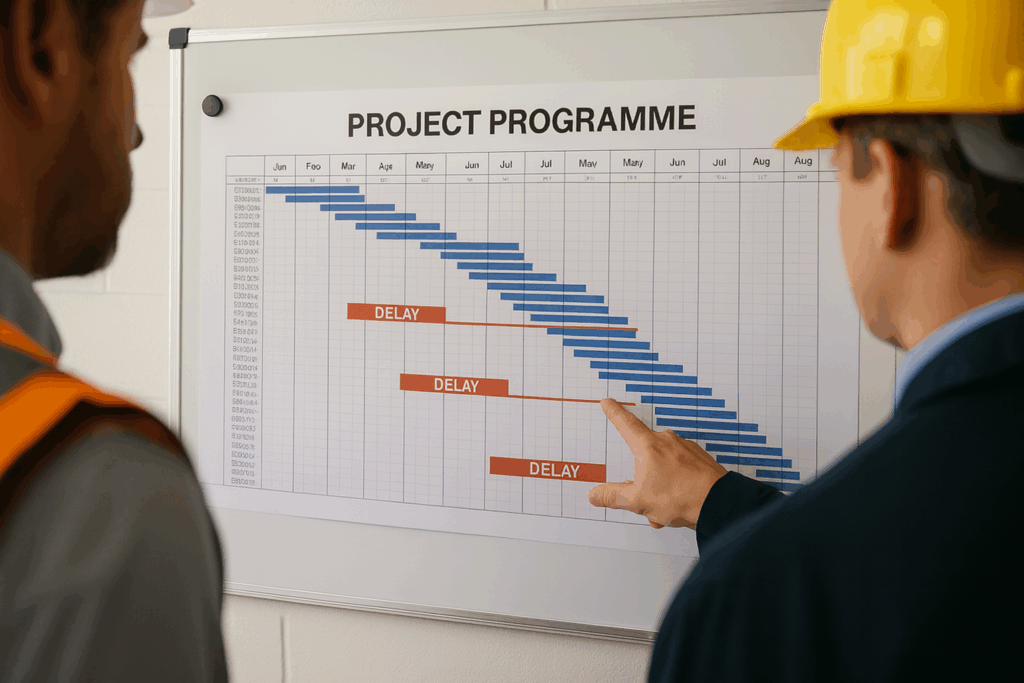
The Hidden Delay
Most projects don’t miss deadlines because of one dramatic event. They slip through dozens of small overruns – late approvals, slow mobilisation, uncoordinated interfaces. Each adds days, then weeks, until the programme is no longer realistic.
Where does it go wrong?
- Design information issued late or incomplete.
- Subcontractors mobilising slower than planned.
- Dependencies between trades not coordinated.
- Delays not formally notified, leaving no commercial protection.
The Root Cause
Programmes often look perfect on paper but don’t reflect the messy reality of delivery. Teams treat them as static, rather than live tools. Without constant updates and proper notices, delays build silently until they’re impossible to recover.
One real-world example:
On a £200m infrastructure project, small two-week slippages across multiple packages added up to a six-month delay. The contractor absorbed £5m in prelims and disruption costs – none of which were contractually recoverable because notices were missed.
Control Creates Certainty
The best project teams:
- Update programmes weekly, not monthly.
- Track critical path with real-time data, not assumptions.
- Issue early warnings and delay notices immediately.
- Link programme changes directly to cost and risk forecasts.
Final Thought
Programmes don’t fail overnight. They fail in silence, one unnoticed slip at a time. Protecting delivery – and profit – means treating programmes as living documents, not compliance exercises.

